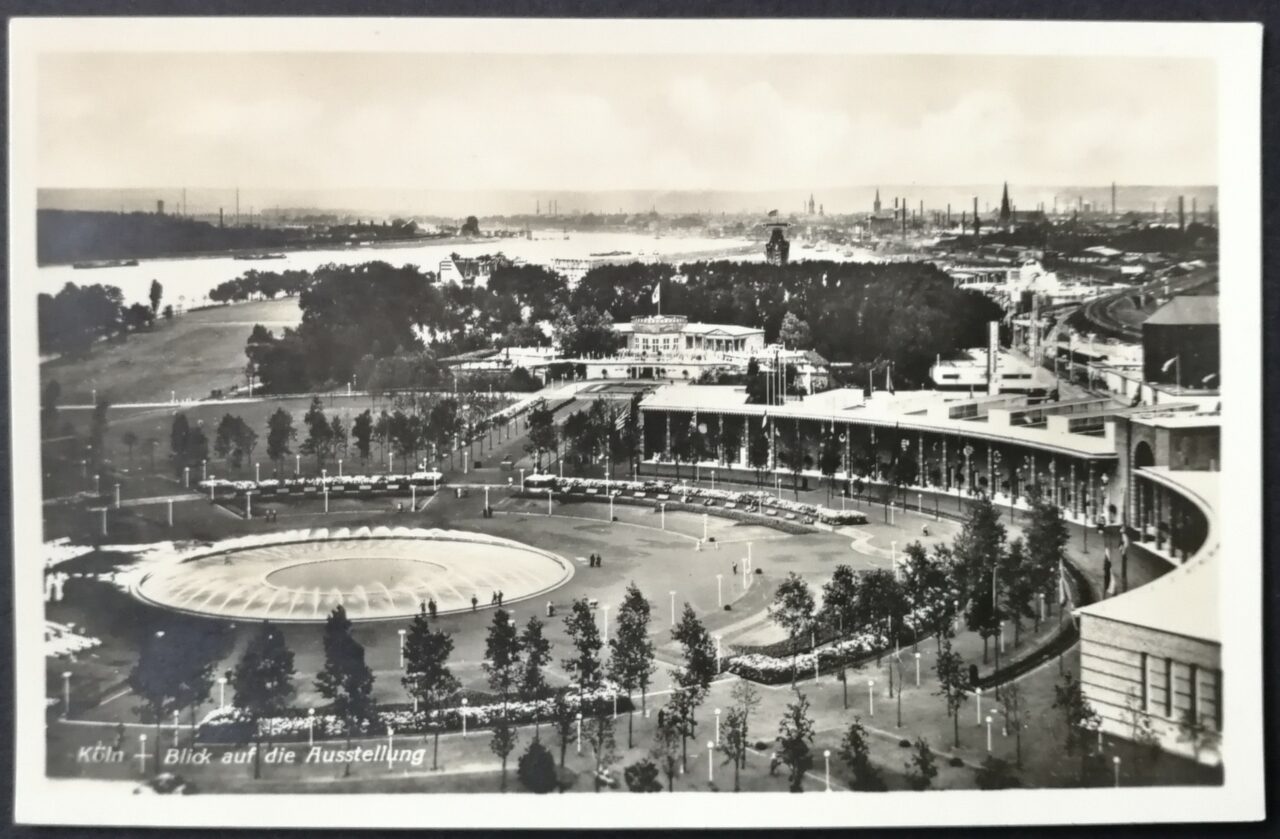The PRESSA – the International Press Exhibition held in Cologne in 1928 – was the most ambitious and comprehensive exhibition ever organised to present past and contemporary journalism. Between 12 May and 14 October 1928 the pavilions of 43 countries and of the League of Nations, and a total of 1,500 exhibitors (among them 450 from outside Germany), attracted more than 5 million visitors.

Private Archive Stephanie Seul

photo: Neuwieser, CC BY-SA 2.0, flickr.com
The exhibition highlighted the numerous facets of contemporary journalism, including its historical roots and its cultural, technical, economic and international interdependencies to a professional audience and to the general public. The idea for a press exhibition did not originate with the experts, but with members of the Cologne trade fair and Dr Konrad Adenauer, who at that time was Lord Mayor of Cologne and later was to become the first chancellor of the Federal Republic of Germany.
Ultimately, the PRESSA’s mission was political: Its organisers wanted to demonstrate, with the first major international fair held on German soil after the end of the First World War, that the Weimar Republic was a great power and willing and capable of contributing actively towards peace and international understanding. The political dimension of the PRESSA found its expression in the speeches held during the opening and closing ceremonies, and in the official publications of the exhibition.

As a result of these high expectations, the PRESSA became an international media event. The German and foreign press reported extensively on the opening and closing ceremonies as well as on the concept and contents of the exhibition. Furthermore, the media not only reflected widely about the political dimension of the PRESSA, but also about the role of the press in furthering international peace and cooperation. The intensity and euphoria with which the idea of the PRESSA and the press as instruments of peace was discussed suggests that the exhibition had raised an issue that concerned politicians, journalists, and the public alike around the globe at this time.

The PRESSA was held on an area stretching over more than three kilometres along the right bank of the Rhine vis-à-vis the historic city centre of Cologne. Whereas some of the existing structures on the site were adapted for the PRESSA’s use, the large exhibition halls and the smaller pavilions were newly constructed. The most significant buildings – the main exhibition hall (‘House of Congress’) with its striking tower and the half-circular ‘House of States, which housed the displays of 43 nations and the League of Nations – still exist today, as can be seen on recent photographs of the Cologne exhibition centre.

photo: Engel.ac/stock.adobe.com

Private Archive Stephanie Seul

Publications
Seul, Stephanie: “‘Trägerin des europäischen Gemeinschaftsgedankens – lebendige Magna Charta des Friedens‘: Die politische Dimension der PRESSA Köln 1928 und ihr Widerhall in der zeitgenössischen deutschen und internationalen Presse“ [‘Manifestation of the Idea of European Unity – Living Magna Charta of Peace‘: The Political Dimension of the PRESSA Cologne 1928 and its Reception in the Contemporary German and International Press], in Susanne Marten-Finnis and Michael Nagel (eds.), 80 Jahre PRESSA, Internationale Presse-Ausstellung Köln 1928, und der jüdische Beitrag zum modernen Journalismus. The PRESSA, International Press Exhibition in Cologne 1928, and the Jewish Contribution to Modern Journalism. Vol. 1. Bremen: edition lumière, 2012, pp. 57-104; PDF
Schwarz, Johannes Valentin and Stephanie Seul: “Materialien zur PRESSA, Köln 12.5.–14.10.1928,“ in Susanne Marten-Finnis and Michael Nagel (eds.), 80 Jahre PRESSA, Internationale Presse-Ausstellung Köln 1928, und der jüdische Beitrag zum modernen Journalismus. The PRESSA, International Press Exhibition in Cologne 1928, and the Jewish Contribution to Modern Journalism. Vol. 2. Bremen: edition lumière, 2012, pp. 673-716.